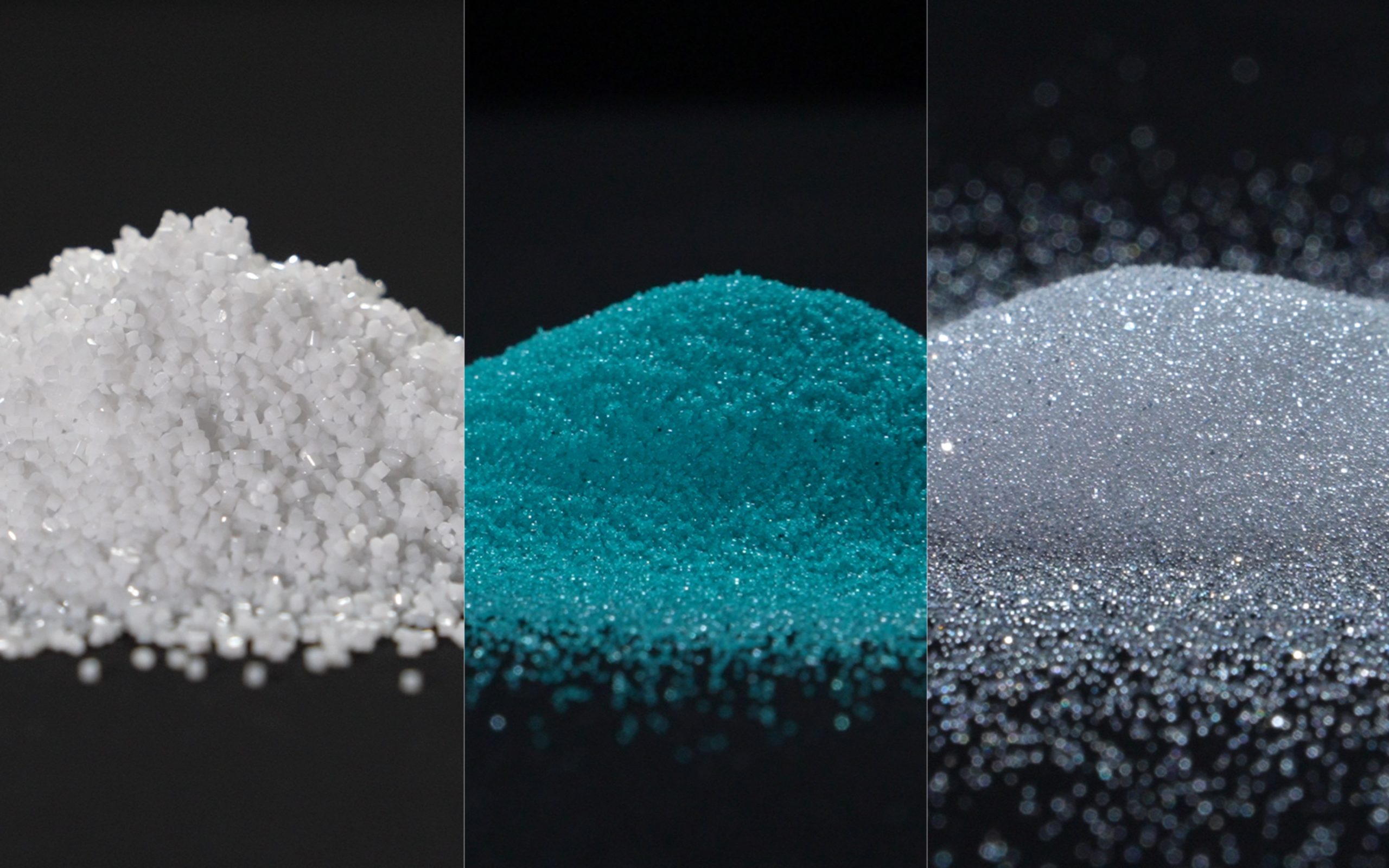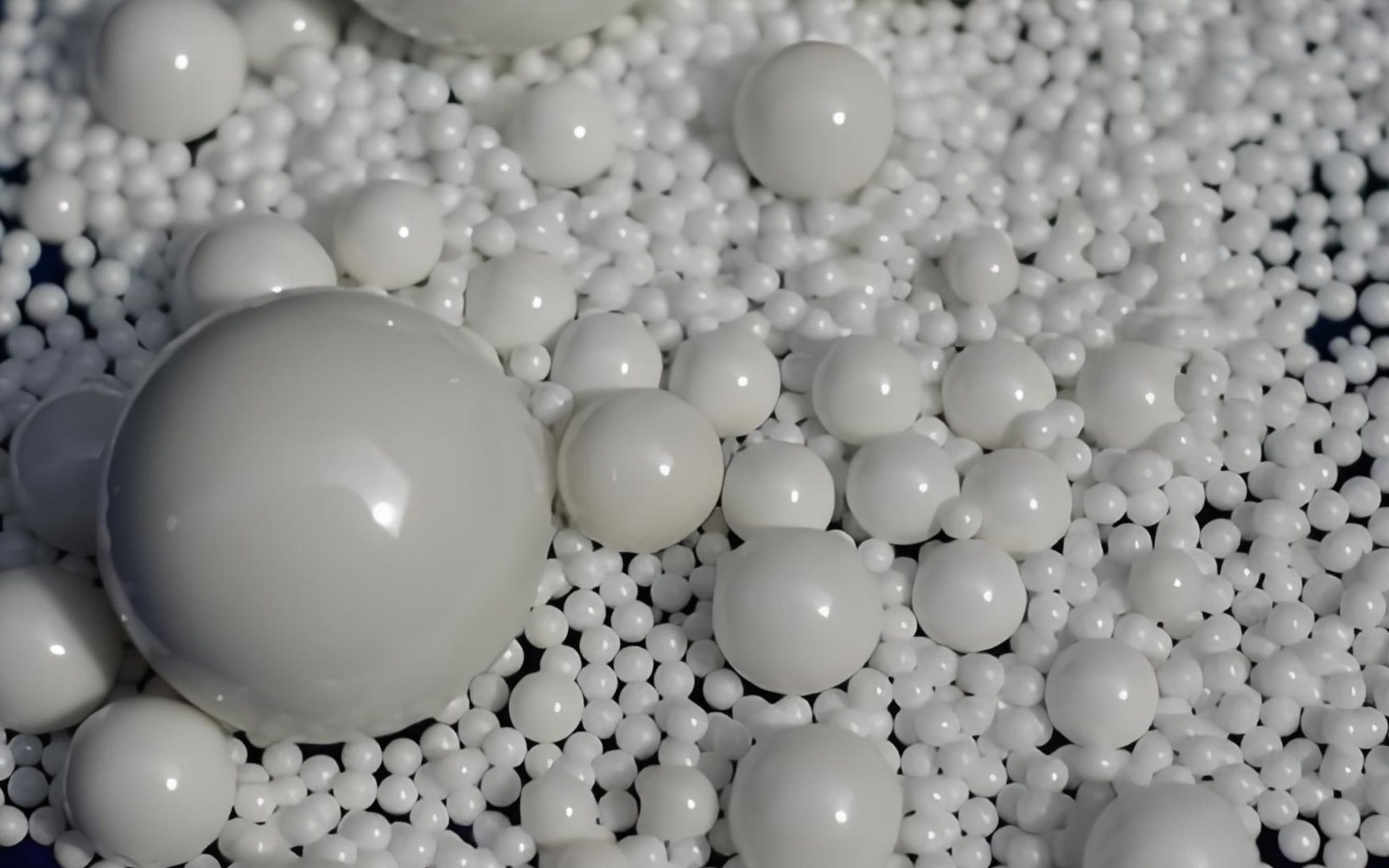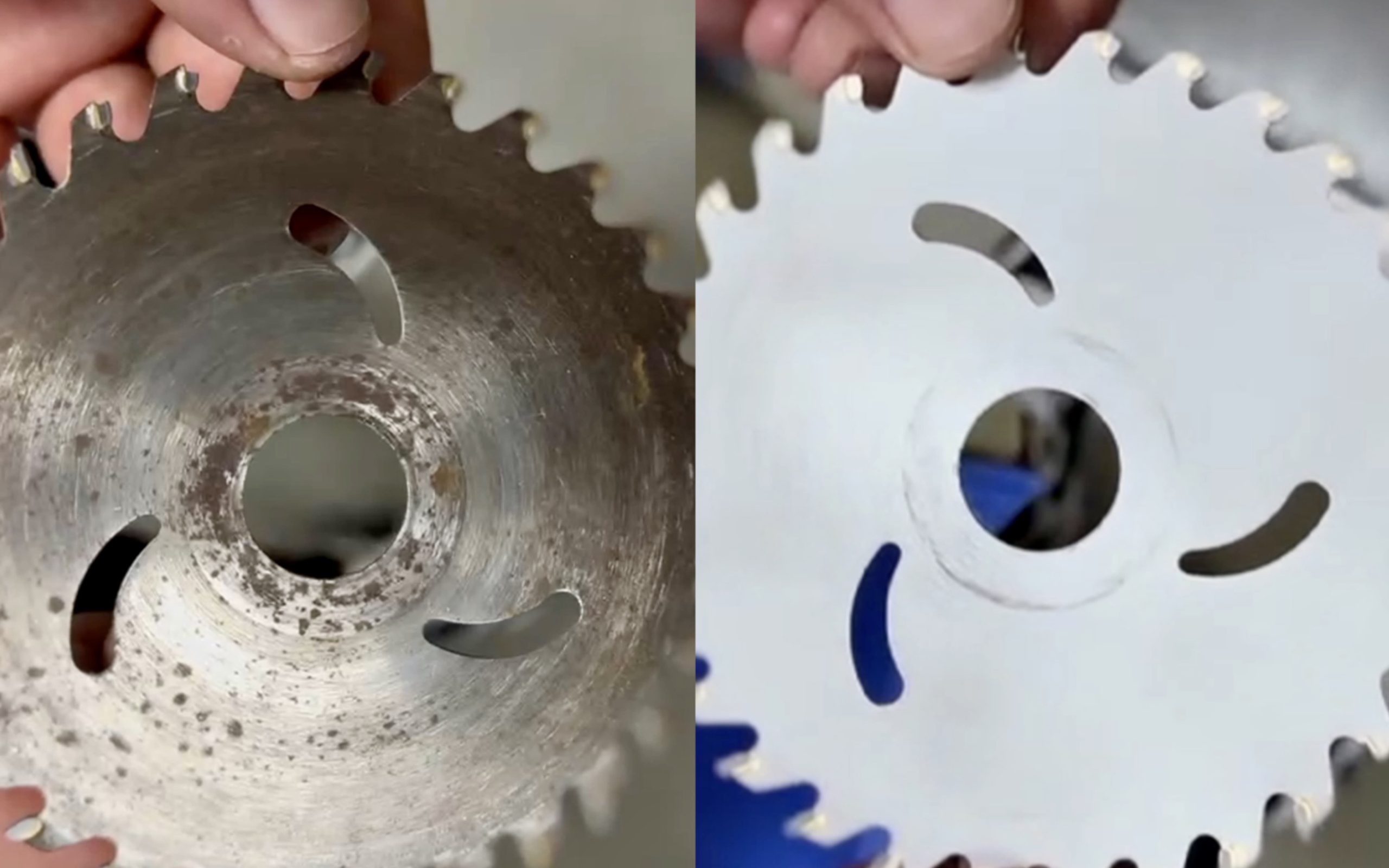The connection between polyamide 6 and polystyrene
September 27, 2024

In the world of plastic materials, polyamide (commonly known as nylon) and polystyrene are two widely used polymer materials with important application value. With the advancement of science and technology and the continuous development of industry, these two materials play an irreplaceable role in many fields. This article aims to explore the main differences between polyamide 6 and polystyrene, and introduce relevant deflashing media to help readers better understand their respective characteristics, applications and standards for selecting suitable materials.
Polyamide Overview
Polyamide is an important class of synthetic polymer materials, widely used in textiles, automobiles, electronics, and engineering plastics. Polyamide is usually produced by polymerization reaction, and its main types include polyamide 6 (nylon 6), polyamide 66 (nylon 66), etc. These materials are known for their excellent heat resistance, wear resistance, and chemical stability.
- Material composition and production process: The synthesis of polyamide is usually carried out by the polymerization reaction of aliphatic diacids and amine compounds. This process can be carried out by a variety of methods, such as ring-opening polymerization and polycondensation reaction. The composition of polyamide determines its excellent physical and chemical properties, making it popular in demanding applications.
- Main characteristics:
- Heat resistance: Polyamide has a high melting point (about 220°C to 260°C), which allows it to maintain good performance in high-temperature environments.
- Wear resistance: The wear resistance of polyamide makes it widely used in mechanical parts and friction materials.
- Chemical stability: It shows good resistance to many chemicals and is suitable for a variety of industrial environments.
Overview of polystyrene
Polystyrene is a lightweight, rigid, and affordable plastic material that is widely used in packaging, household goods, electronics, and construction. Polystyrene can be divided into ordinary polystyrene (PS) and high-impact polystyrene (HIPS), the latter of which is based on ordinary polystyrene with rubber added to improve toughness.
- Material composition and production process: The synthesis of polystyrene is mainly achieved through the free radical polymerization reaction of styrene monomers. This process is simple and low-cost, suitable for large-scale production.
- Main characteristics:
- Lightweight: The low density of polystyrene makes it an ideal packaging material.
- Good moldability: Polystyrene can be processed by a variety of molding methods (such as injection molding, and extrusion), and can be flexibly adapted to different product requirements.
- Transparency: Some types of polystyrene have good transparency and are suitable for transparent packaging and display products.
The main differences between the two components
Polyamide and polystyrene have significant differences in chemical structure, physical properties, and application areas, which make them suitable for different occasions.
- Differences in chemical structure:
Polyamide molecules contain amide (-C(O)NH-) functional groups, while polystyrene is polymerized from styrene monomers. The molecular structure of polyamide gives it superior mechanical properties and heat resistance.
- Physical properties:
Polyamides generally have a higher density (about 1.1-1.2 g/cm³), while polystyrene has a lower density (about 1.04 g/cm³). Polyamides have a higher hardness and show good impact resistance, while polystyrene is brittle.
- Thermal properties:
Polyamides generally have a higher melting point than polystyrene and can work at higher temperatures. Polystyrene has a relatively low heat deformation temperature, which is suitable for applications in cryogenic environments.
- Chemical resistance:
Polyamide is resistant to many chemicals, while polystyrene is sensitive to certain solvents (such as alcohol) and is prone to swelling or cracking.
- Differences in application areas:
Polyamide is widely used in automotive parts, mechanical structures, and textiles where high strength and heat resistance are required, while polystyrene is mainly used in lighter and more economical applications such as packaging, consumer goods, and electronic product housings.
After understanding the characteristics of the two plastic components of polyamide and polystyrene, we can take a closer look at three related deflashing media: nylon polyamide deflashing media, cryogenic deflashing media, and polystyrene deflashing beads. These three media not only have their own characteristics in material composition but also have obvious differences in hardness, shape, color, and application scenarios.
Nylon polyamide deflashing media
- Material composition: Nylon polyamide deflashing media are mainly made of polyamide resin 6(nylon 6). Polyamide is known for its excellent mechanical properties and wear resistance and is suitable for demanding deflashing applications.
- Hardness: Nylon polyamide deflashing media usually have a hardness between 54 and 62 Barcol hardness, and has good flexibility, which allows it to adapt to workpieces of different shapes.
- Shape and color: This medium can usually be made in color, with yellow and red being the most commonly used colors, which is easy to distinguish during operation. The particle shape is a cylinder or hexahedron with equal diameter and height. The size is extremely small, soft, and light, and can achieve a better deflashing effect without damaging the workpiece.
- Advantages
- Efficient deflashing: Nylon polyamide 6 has good cutting performance and can quickly remove burrs on the surface of the workpiece.
- No damage to the substrate: Due to its softness, it is suitable for precision parts and will not cause scratches or damage to the substrate.
- Strong wear resistance: It can maintain performance in long-term use, reduce replacement frequency, and reduce production costs.
- Environmentally friendly and non-toxic: Compared with some chemical deflashing methods, using nylon polyamide deflashing media is more environmentally friendly.
- Applicable scenarios: Widely used in medical devices, automotive parts, aerospace, and other industries, especially suitable for precision machining with high surface quality requirements.
Cryogenic deflashing media
- Material composition: Cryogenic deflashing medium is usually made of polyamide resin. These materials show good toughness and stability under cryogenic conditions and are suitable for special deflashing processes.
- Hardness: The hardness of the cryogenic deflashing medium is low, generally between 3 and 4 Mohs hardness, ensuring that no additional damage is caused to the workpiece when removing burrs.
- Shape and color: This medium is mostly milky white, and the particle shape is a cylinder or hexahedron with equal diameter and height.
- Advantages
- Cryogenic operation: It can be used in low-temperature environments and is suitable for temperature-sensitive workpieces.
- Good adaptability: Its softness makes the medium suitable for workpieces of various shapes, providing greater flexibility.
- High safety: No harmful gases are generated during cryogenic deflashing, which is safer and more environmentally friendly.
- Cost-effectiveness: Compared with other high-performance deflashing media, the cost of cryogenic deflashing media is more economical and suitable for large-scale production.
- Applicable scenarios: Suitable for industries such as aerospace, electronics, and plastic products, especially in situations where cryogenic deflashing is required, it can effectively protect the integrity of the product.
Polystyrene Deflashing Beads
- Material composition: Polystyrene deflashing beads are made of polystyrene resin, which is favored for its lightness and easy molding.
- Hardness: Polystyrene has a relatively low hardness, generally between 46 and 54 Barcol hardness, which is suitable for general deflashing applications.
- Shape and color: Usually transparent and spherical in shape, which is convenient for uniform use during sandblasting.
- Advantages
- Lightweight: The lightweight characteristics of polystyrene make it easy to operate during sandblasting and reduce the burden on equipment.
- Low cost: Compared with other deflashing media, polystyrene deflashing beads have a lower cost and are suitable for large-scale production.
- Wide application: Polystyrene has excellent processing performance and is suitable for a variety of industrial environments.
- Good moldability: It can adapt to complex workpiece shapes and ensure uniform burr removal.
- Applicable scenarios: Widely used in industries such as electronic products, toys, and packaging materials, suitable for general surface treatment needs.
Comparison of 3 deflashing media
Similarities
All three deflashing media are designed to remove burrs on the surface of workpieces and improve product quality, and all have a certain degree of flexibility to adapt to workpieces of different shapes to ensure that no damage is caused to the substrate.
Difference
- Material composition
Nylon polyamide media and cryogenic deflashing media are mainly made of polyamide resin, while polystyrene deflashing beads are made of polystyrene resin.
- Hardness difference
Nylon polyamide deflashing media have the highest hardness and are suitable for high-demand precision machining; cryogenic deflashing media have a lower hardness; polystyrene deflashing beads are between the two in hardness and are suitable for general applications.
- Temperature tolerance range
Nylon polyamide deflashing media have stable performance at higher temperatures, and its melting point is between 200-250°C. Due to its excellent heat resistance, it is suitable for processing materials or application scenarios with higher heat resistance. In contrast, cryogenic deflashing media are particularly suitable for cryogenic environments, especially for workpiece processing in a frozen state. They can usually maintain excellent performance in an environment of -80°C and are suitable for cryogenic deflashing processes and processing high-precision, small workpieces. Polystyrene has a lower operating temperature and a melting point of around 100°C, which is suitable for surface treatment at low and normal temperatures but performs poorly in high-temperature environments. It is suitable for light industries that do not require high-temperature operations.
- Applicable scenarios
Nylon polyamide deflashing media are more suitable for the high-end market, while cryogenic deflashing media focus on special applications; polystyrene deflashing beads are the preferred choice for cost-sensitive applications.
- Treatment effect
The flexibility of nylon polyamide deflashing media makes it suitable for processing parts with complex shapes, and the treated surface is relatively smooth and has high precision. Cryogenic deflashing media are particularly suitable for use in high-precision, high-gloss manufacturing, such as medical devices and aerospace parts. The surface accuracy is extremely high, and there is almost no secondary damage to the workpiece, which is an ideal choice for high-demand scenarios. Polystyrene deflashing beads are mainly used in the light industry and electronics industries. Although they have strong deflashing ability, their surface treatment accuracy is relatively low, which makes them suitable for large-area, non-precision workpiece processing.
- Service life
Nylon polyamide deflashing media are known for their excellent wear resistance and can maintain a long service life in frequent high-intensity use occasions. Due to the toughness of its material, the loss during use is low. Cryogenic deflashing media are usually used in extremely cryogenic environments, and the friction loss at cryogenics is extremely small, which is suitable for frequent use. However, polystyrene deflashing beads have relatively poor wear resistance, especially in high-intensity use occasions, and their lifespan is relatively short. Due to their lightweight and low cost, they are usually used on one-time or short-term use occasions.
- Economic benefits
The initial purchase cost of nylon is relatively high, but the resources are abundant and the cost is controllable. In addition, due to its strong durability, long service life, and low maintenance cost, the cost performance in long-term use is very high. Although the composition of cryogenic deflashing media is also nylon 6, due to its special use and production process, the purchase cost may be higher, but the consumption rate is extremely low. Polystyrene deflashing beads have the lowest cost and are abundant in raw materials. However, due to their low wear resistance, they are consumed quickly, especially in high-intensity operations, and have a relatively short service life.
- Operational safety
Nylon has high operational safety and is a non-toxic material. It will not produce harmful gases or by-products when used within the normal temperature range. It will not cause obvious harm to operators and the environment when used. Cryogenic deflashing media itself is relatively safe, but because it needs to be used in an extremely cryogenic environment, there may be certain safety hazards in the operation of refrigeration equipment. Strict safety measures are required to protect operators and prevent frostbite. Polystyrene has better operational safety at room temperature, but it may release harmful gases at high temperatures, so high-temperature operations need to be avoided. At the same time, this type of media is relatively light and prone to dust. During use, attention should be paid to air filtration to prevent inhalation.
Polyamide and polystyrene each have unique properties and application areas. Understanding the differences between them will help engineers and designers make more informed decisions when choosing materials. For applications that require durability and high performance, polyamide is undoubtedly a better choice; while for products with higher requirements for economy and lightweight, polystyrene is more suitable. By comprehensively considering all aspects, choosing the right plastic material is the key to achieving product success.
Filters














